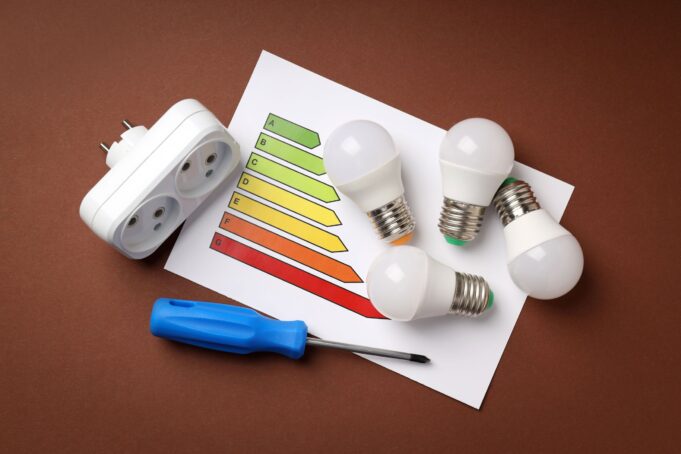Hospitals are engines of healing, operating 24/7 to care for patients and save lives. But this vital mission comes with a steep price—healthcare facilities are some of the most energy-intensive buildings, consuming vast amounts of electricity and fuel. This isn’t just a matter of high bills; inefficient energy practices increase hospitals’ carbon footprint, conflicting with global sustainability goals. Rising regulatory demands and the need to improve operational resilience add to the challenge. Achieving energy efficiency in hospitals is no longer a choice—it is a responsibility to both the environment and the bottom line. The good news? Solutions exist, and they don’t have to compromise patient care.
Energy Efficiency in Action: Strategies for Smarter Hospitals
Smarter Systems for Energy Management
An effective energy management system (EMS) is the cornerstone of a more efficient hospital. These systems give facilities managers real-time insights into energy consumption, allowing them to identify waste, optimize use, and cut costs. Integrated with smart city initiatives, EMS can help hospitals seamlessly align with broader sustainability goals, from reducing peak demand to supporting renewable energy grids.
The HVAC Revolution
Few systems consume as much energy in hospitals as heating, ventilation, and air conditioning (HVAC). Innovations like geothermal heat pumps, variable frequency drives, and advanced filtration systems can dramatically cut energy usage without compromising air quality. Given the critical role of HVAC in maintaining sterile and comfortable environments, upgrading these systems is both an energy-saving opportunity and a medical necessity.
Lighting That Works Smarter, Not Harder
Lighting is a simple yet significant area for improvement. Switching to LED systems reduces electricity consumption while minimizing heat output, which lessens the burden on HVAC systems. Adding occupancy sensors and automated dimmers enhances efficiency further, ensuring lights are only on when needed.
Green Building Design: New and Retrofitted
Green hospitals are more than a trend—they’re the future. Facilities designed to meet certifications like LEED incorporate materials and layouts that naturally reduce energy demand. For older hospitals, retrofitting measures such as adding solar panels, upgrading insulation, and replacing windows with energy-efficient glass can achieve similar results.
Energy-Efficient IT Infrastructure
As the digital demands of healthcare grow, so does the energy used by servers, data centers, and electronic medical devices. Virtualization, energy-efficient servers, and optimized IT infrastructure can reduce energy usage while enhancing the reliability of critical systems. This not only lowers costs but also ensures uninterrupted care for patients.
The Challenges: Navigating Barriers to Efficiency
While the benefits of energy efficiency are undeniable, implementing these changes isn’t without hurdles:
- High Upfront Costs: Retrofitting building or adopting advanced systems requires substantial initial investment, which can be a deterrent for many facilities.
- Operational Disruptions: Hospitals operate 24/7, leaving little room for downtime during system upgrades or installations.
- Resistance to Change: Securing buy-in from stakeholders, from administrators to clinical staff, can be difficult without clear demonstrations of benefits.
- Regulatory Complexity: Navigating energy-related regulations and qualifying for incentive programs requires specialized expertise.
Best Practices: A Path to Sustainable Hospitals
Facilities managers can overcome these challenges by adopting the following strategies:
- Energy Audits: Conduct regular audits to identify inefficiencies and prioritize projects with the highest return on investment.
- Stakeholder Engagement: Engage all hospital departments in sustainability efforts, ensuring alignment across the board.
- Phased Implementation: Gradual changes, like rolling out upgrades department by department, minimize disruption.
- Leverage Incentives: Take advantage of government rebates and grants to offset costs for energy-efficient upgrades.
Energy Efficiency as a Dual Opportunity
Efforts to improve energy efficiency create a ripple effect on benefits. Lower utility bills are just the beginning—hospitals that adopt sustainable practices also enhance their reputation as responsible community partners. Energy-efficient systems reduce a facility’s environmental impact by cutting greenhouse gas emissions, aligning with broader climate goals. Beyond sustainability, these initiatives can improve resilience, ensuring critical systems continue to function during energy disruptions or emergencies.
Healthcare facilities have a unique opportunity to lead the way in sustainability while reducing costs and enhancing care. From smart energy management systems to efficient HVAC and IT infrastructure, the path to energy efficiency is filled with opportunities to innovate. The journey may present challenges, but the rewards—lower operational costs, greater resilience, and a smaller carbon footprint—far outweigh the obstacles. Hospitals that embrace these changes will not only save money but also contribute to a healthier planet, aligning their mission of care with their operational priorities.






